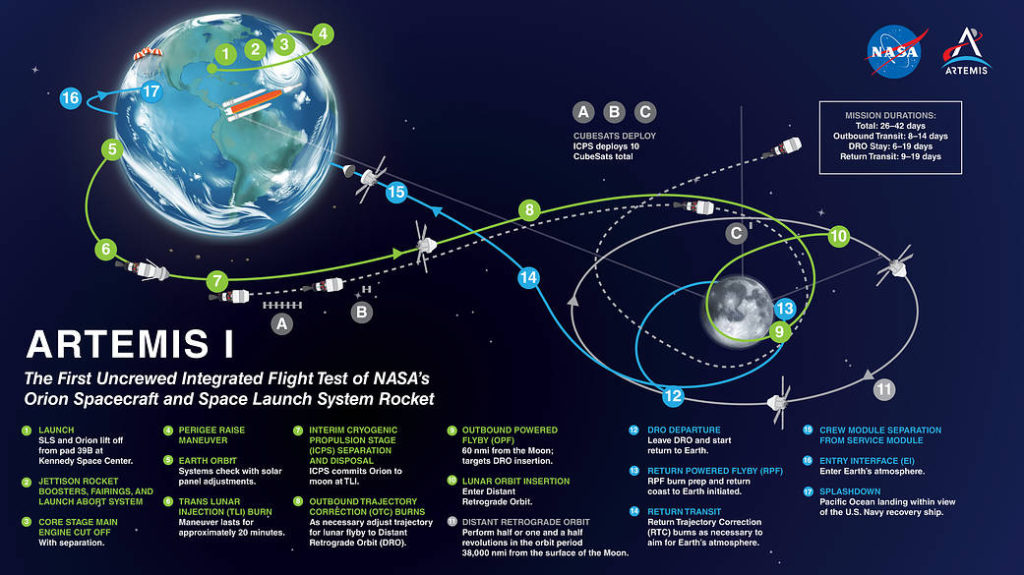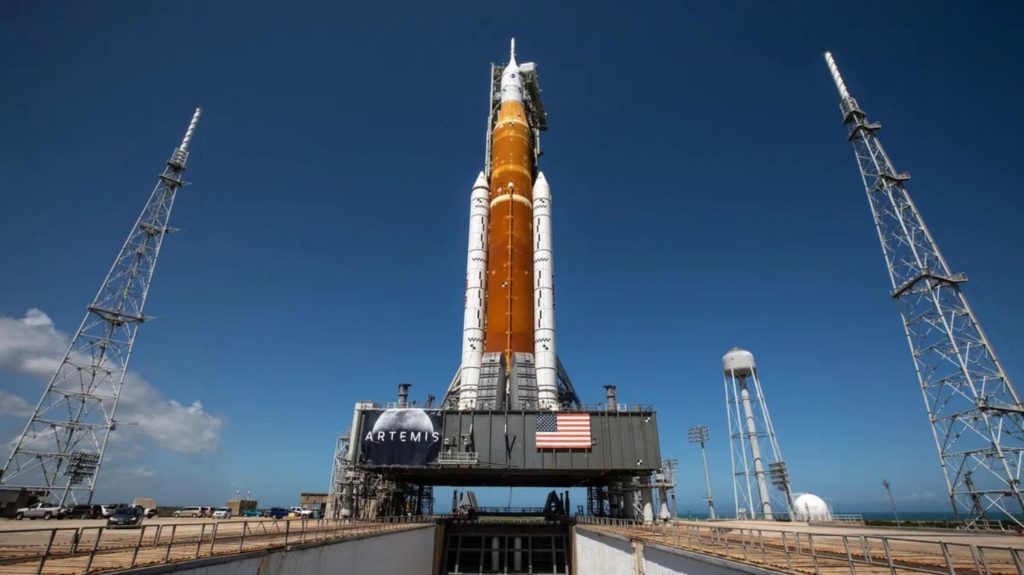|
Getting your Trinity Audio player ready...
|
NASA Artemis I Mission — When the Orion spacecraft and the Space Launch System (SLS) rocket launch for the first time from NASA’s upgraded Kennedy Space Center in Florida, all eyes will be on the iconic Launch Complex 39B.
The NASA Artemis I mission is to establish a sustained human presence on the Moon for many years to come.It will be the first in a line of missions that get progressively more difficult.
Prior to the first flight with crew aboard Artemis II, Artemis I’s main objectives are to show Orion’s systems in a spaceflight environment and to guarantee a safe re-entry, descent, splashdown, and recovery.
“This is a mission that truly will do what hasn’t been done and learn what isn’t known,” said Mike Sarafin, Artemis I mission manager at NASA Headquarters in Washington-USA. “It will blaze a trail that people will follow on the next Orion flight, pushing the edges of the envelope to prepare for that mission.”
Mission Facts:
- Launch date: Nov. 16, 2022
- Mission duration: 25 days, 11 hours, 36 minutes
- Total distance traveled: 1.3 million miles
- Re-entry speed: 24,500 mph (Mach 32)
- Splashdown: Dec. 11, 2022
On to the Moon

A service module delivered by the European Space Agency will help Orion continue its journey from Earth orbit to the Moon by supplying the spacecraft’s primary propulsion engine and electricity (as well as house air and water for astronauts on future missions).
Orion will travel across communication satellites in Earth orbit, over the Van Allen radiation belts, and past the GPS satellite constellation. Orion will use the Deep Space Network instead of NASA’s Tracking and Data Relay Satellites to connect with mission control in Houston.
From this point on, Orion will continue to show off its innovative design for navigating, communicating, and working in a deep space environment.
It will take many days to go to the Moon, during which time engineers will inspect the spacecraft’s systems and adjust its route as necessary. In order to get into a new deep retrograde, or opposite, orbit that is around 40,000 miles (70,000 km) from the Moon, Orion will fly nearly 62 miles (100 km) over the surface of the Moon.
For the duration of around six days, the spacecraft will remain in that orbit, gathering data and enabling mission controllers to evaluate the spacecraft’s performance. Orion will move retrogradely around the Moon at this time, which is the opposite of how the Moon moves around Earth.



